Beans - the plant of the bean family, which grows both in the form of a bush and in the form of a curly liana. Motherland of this culture is considered South and Central America. There she was known since ancient times. Beans knew more in ancient Rome, where it was used as food and a cosmetic agent. She also became an ingredient of decorative powder, which well smoothed wrinkles and possessed a softening effect. One of the components of the unique face mask of Cleopatra was the beans. In Europe, these beans appeared relatively late, namely, in the 15th century.
Content
Culture characteristics
She was delivered from behind the ocean Dutch and Spanish navigators. After a few decades, beial beans spread through the territory of Russia. Then the beans in the people were called French beans. It was originally used in decorative purposes: it was decorated with gardens, verandas and flowerbeds. As a product of food, the beans of this plant began to use only 3 centuries after 3 centuries.
Soon the varieties of tender beans were bred, the beans that could be used together with pods. They had small seeds and a rather thick shell. Nowadays, such beans are grown in almost all countries. It is appreciated as a significant dietary product, which has unique properties.
More fifty types of beans are known in the world. At the same time, all varieties can be divided into:
- bush
- curly.
Classify the plant can also be classified depending on the Bob structure. In this case, the culture is divided into:
- sugar
- semi-chamber
- lultiestone beans.
In addition, the pods of sugar species can either have noticeable fat fibers on the side seams, or not. More preferred are varieties without fibers. The beans grows in the form of a liana and therefore, with growth, he can pay support. A better harvest plant gives on moderately moisturized and medium-sized lunks. Heavy soils, in which groundwaters are highly located, the beans do not love very much. As for fruiting, the fruits appear only from July to September. Maturation depends largely on the bean variety. It is noteworthy that in one season you can remove up to five yields. At the same time, the harvest is usually collected during the period during which the bean sash is still juicy, and the fruits are not long ago.
As for calorieness, then 100 grams of beans contain approximately 25 kilocalories. For this reason, it is useful for people who want to lose weight. The podlock bean is rich in vitamins A, B, C, E, carotine, folic acid. In addition, the beans contain iron, potassium, calcium, zinc, chrome, etc. In addition, the beans have carbohydrates, proteins, fats and sugars. Thanks to the beneficial properties of this plant, the body gets everything you need to combat free radicals, as well as elements that allow you to keep healthier hair and skin.
By the way, some nutritionists believe that the beans should be a mandatory point in the menu of any person, especially after 40 years. But this does not mean that it should not be included in the diet until this age. Speaking about the values \u200b\u200bof beans, it should be noted that it is useful for women, because it strengthens the chest. It is enough twice a week there are dishes from these beans. If you are tasty to cook, be sure that they will like everyone home.
The tricky beans has many useful properties. In particular, it improves the work of the digestive system, facilitates the state during rheumatism, bronchitis. It helps with skin diseases. Also largely due to the content of sulfur, it is very valuable in various infectious diseases of the intestine.
In addition to its culinary properties, some types of beans, they are called decorative, are excellent material for landscape design. On the Internet, on request, photos of decorative beans can be found hundreds of amazing photos with the image of this amazing plant. Particularly fascinatingly, the beans purple decorative. Next, we will tell you more about the peculiarities of growing this culture.
Decorative beans
The beans decorative curly is one of the brightest representatives of the legume family. Most often, this name is applied to fiery or Turkish beans. This annual plant is a liano, the length of which can reach up to 4 m. Decorative bean is rather unpretentious and perfectly rushes even in shaded places, although it is initially considered a light-affiliated plant.
Liana decorative beans has wide green leaves and beautiful flowers predominantly white and bright red colors, however, there are and combined varieties.
The homeland of this plant, like cultural species, is considered to be South America. On our continent, decorative beans gained widespread from the 15th century. Like the cultural varieties of beans, decorative also has its own beans - large and rough. They cannot be eaten. Moreover, experts believe that unselfish fruits can be dangerous to health.
Like many plants of the legume family, the decorative beans can accumulate nitrogen in the surrounding soil. This is due to the nodule bacteria that are capable of fixing this element in the air. This property makes the plant not only by the decorative decoration of the garden, but also extremely useful. The soil enriched with nitrogen allows you to get good yields of tomatoes, potatoes and other cultivated plants. At the same time, a smaller incidence of crops growing next to the decorative beans, phytoofluorosis, is recorded.
Positive "cohabitation" of decorative beans with cultural plants in terms of the struggle against pests. Thus, it was noted that the number of colorado beetles on potatoes planted next to this culture significantly decreases. Due to this there is no need to apply chemical means of combating such pests.
Decorative beans: landing and care
Landing of decorative beans spend by sowing seeds immediately in open ground. The soil of the time of the culture landing should be fine. As a rule, plant decorative beans in the middle or even at the end of May, since at this time the probability of frosts is reduced to zero.
Before planting, the bean seeds are decorative soaked in water no more than a day. In this case, the liquid should be slightly warmer room temperature. Experts advise to add some growth stimulants into water. Seeds are planted at a depth of no more than 1 cm, while doing wells located at a distance of 40-45 cm apart. The smell is poured with water and planted 2-3 bobs into it.
Sometimes the cultivation of decorative beans is produced through seedlings. However, this method is not too popular, because this plant does not tolerate the transplant. For the cultivation of seedlings, the beans seeds plant in the greenhouse in mid-April. For each bush involve a separate pot. It is better to use special peat cups for this, in which seedlings can be seated directly into the soil, thereby not traumating the plant. If there are no such cups, then the culture is transplanted with the land of land. The temperature in the greenhouse for growing seedlings should be no lower than + 18⁰c ... + 22⁰c. Do not pinch shoots. If springs seedlings are in pots for more than a month, they need to give an additional support. To this end, it is necessary to close a small wooden rod next to the sprout, for which the old pencil is quite suitable for.
Care of decorative culture varieties
In the event of frosts, decorative beans must be insulated, covering with polyethylene film or nonwoven material. It is necessary to do it extremely gently so as not to damage the crops. Alternatively, you can build a small temporary greenhouse. To do this, take the steel wire with a diameter of 2 mm, cut into pieces of 0.5-0.7 m (depending on the height of the plant) and make a semicircle from them. At a distance of 0.4-0.5 m from each other insert the wire into the ground, making the carcass of the greenhouse. For strength, connect all the semiring wire. Then cover the frame with a transparent film and secure the bottom with the help of stones, or cover the ground.
The unpretentiousness of the decorative beans does not mean that it can be grown anywhere. The plant prefers rich soils with a facilitated structure. In addition, it loves moisture very much, so it should be rich in hot and arid periods. From fertilizer, decorative beans prefers organic blends, with the exception of fresh manure.
If organic fertilizers are absent, integrated mixtures can be used, which contains superphosphate. The soil around the beans is better to climb so that moisture remains better. This can be done with any bulk material, except for manure. It is better to use straw or wood sawdust.
Decorative beans - a wound plant with which you can make beautiful garden compositions. It can be planted around the arbor, and then at the expense of his wide leaves it will create a shadow, and her beautiful flowers are a great mood. From this plant, beautiful decorative arches, cone, canopies are obtained. When the plant is flowing, it loses its previous form, however, the beans pods that are formed at the place of flowering, give Lianam a special charm.
Varieties of decorative beans
The most popular in our latitudes are varieties of decorative beans are:
- Mammoth is a variety distinguished by large white flowers.
- Two-color - grade, in the colors of which are combined white and red colors.
- Franch - Red bean decorative with bright colors.
A composition of various varieties of decorative beans can rather originally. For example, if there is a round gazebo in the yard, you can smash it into three sectors and put in turn of the mammoth, then two-color and french. Then it turns out a beautiful transition from white to red. Arranges to lean the pegs near the holes with planted seeds and stretch the thick fishing line or twine to the roof of the structure, so that Liana plants can get to it. During the bloom of the beans, your arbor turn into a fabulous palace.

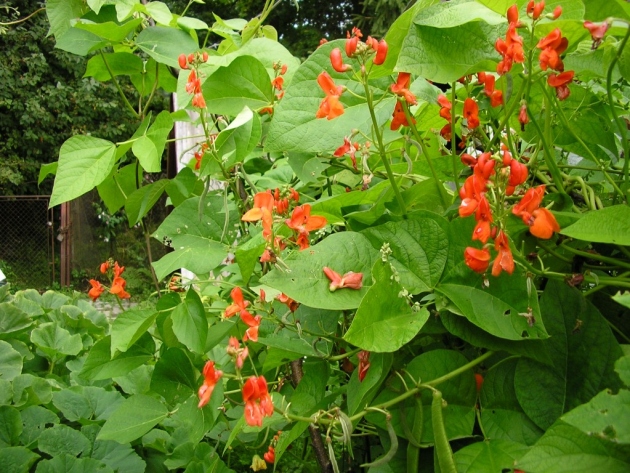
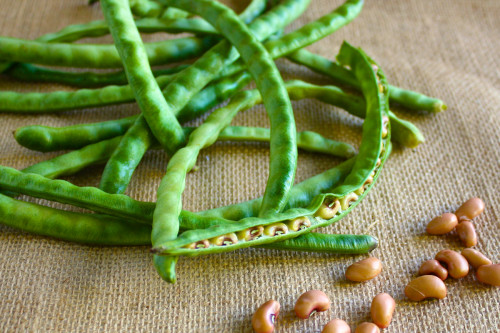
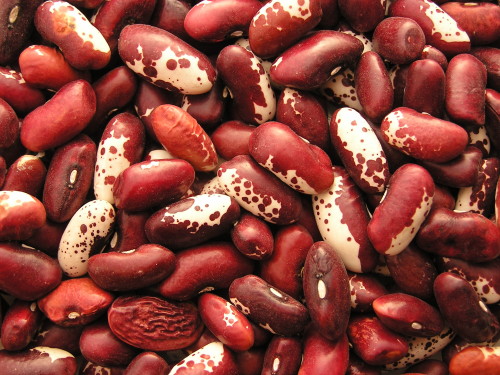
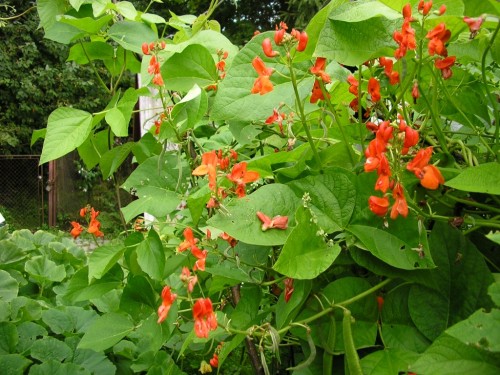
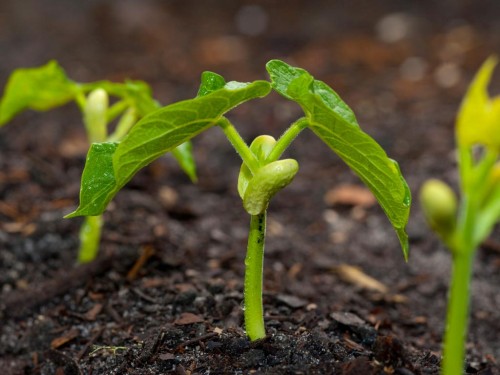
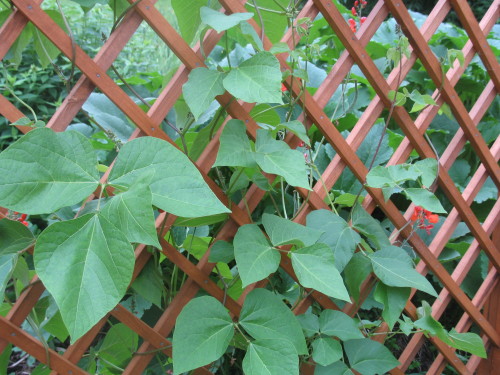
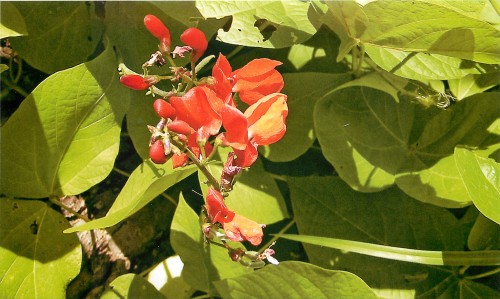
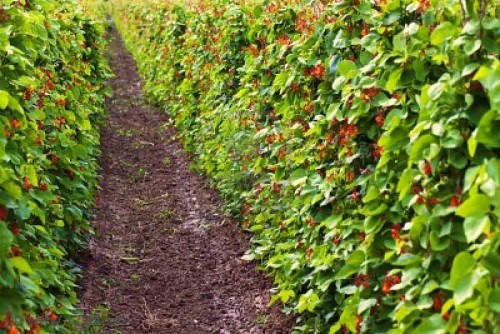












 Start a discussion ...
Start a discussion ...